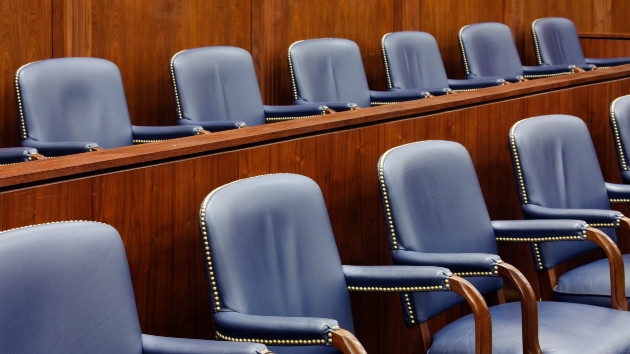(NEW YORK) — A scathing Justice Department report into the 2022 mass shooting at an elementary school in Uvalde, Texas, described “cascading failures of leadership” during the attack and an “unprecedented” level of misinformation in its aftermath that crippled the community’s attempts to recover.
A review team empowered by the department to investigate the shooting “identified several critical failures and other breakdowns prior to, during, and after the Robb Elementary School response,” the report released Thursday morning found.
It described insufficient planning and major departures from established active-shooter protocols. After the shooting had ended, investigators described a chaotic scene in which dead bodies were transported in ambulances and injured students were loaded onto buses. One teacher died on a sidewalk outside the school, where she was being treated.
An 18-year-old gunman entered Robb Elementary School on May 24, 2022, killing 19 students and two teachers before law enforcement breached the classroom and killed the shooter. Responding officers from state and local outfits waited some 77 minutes before breaching a classroom and killing the shooter.
The police response came under scrutiny almost immediately, and a series of misstatements by officials in its aftermath compounded frustration within the tightly knit community. After state and local officials initially lauded the bravery of first responders, Texas Department of Public Safety Director Steven McCraw called their performance an “abject failure.”
MORE: ‘No one took leadership’: A detailed look at the failings in Uvalde school shooting
“The extent of misinformation, misguided and misleading narratives, leaks, and lack of communication about what happened on May 24 is unprecedented and has had an extensive, negative impact on the mental health and recovery of the family members and other victims, as well as the entire community of Uvalde,” the Justice Department report said.
The law enforcement response to the shooting was “a failure that should not have happened,” an emotional Attorney General Merrick Garland said in a news conference Thursday, announcing the findings of the Justice Department’s year-long review into the massacre.
“As I told families and survivors last night, the department’s review concluded that a series of major failures — failures and leadership in tactics and communications, in training and then preparedness were made by law enforcement leaders and others responding to the mass shooting at Robb Elementary,” Garland said. “As a result, 33 students and three of their teachers, many of whom had been shot, were trapped in a room with an active shooter for over an hour as law enforcement officials remain outside.”
Within weeks of the shooting, the Justice Department announced plans to launch a “Critical Incident Review” to examine the police response. Garland commissioned 9 law enforcement experts to conduct interviews and review evidence to craft a “complete incident reconstruction,” a department official said at the time.
That work culminated this week in a searing 575-page report that includes gut-wrenching new details about law enforcement’s lack of preparation for an active shooter, failures in the police response, and the toll of misinformation and chaos in its aftermath.
The school and the school district were woefully unprepared, the report found. Most officers “lacked specialized, advanced training and preparation to handle such situations” and the school district had cultivated “a culture of complacency regarding locked-door policies” – both of which contributed to the challenges in responding to the incident.
“[Some] families received incorrect information suggesting their family members had survived when they had not,” the report noted. “And others were notified of the deaths of their family members by personnel untrained in delivering such news.”
The review team reserved its most critical commentary for the officers who arrived first on scene, who retreated from the classroom and treated the gunman as a barricaded subject, not an active shooter. The review team described this as “the most significant failure.”
“The most significant failure was that responding officers should have immediately recognized the incident as an active shooter situation, using the resources and equipment that were sufficient to push forward immediately and continuously toward the threat until entry was made into classrooms 111/112 and the threat was eliminated,” according to the report.
Lt. Mariano Pargas, Uvalde’s acting police chief at the time, was among the first officers to arrive at Robb. He was deemed by the review team to be “the person best positioned to direct command and control” the law enforcement response, but “failed to do so.”
After the initial failure to pursue and confront the shooter, communications breakdowns compounded the confusion on-scene – even after the arrival of Uvalde Consolidated Independent School District Police Chief Pete Arredondo, whom the report identified as the de-facto on-scene commander. Arredondo “lacked a radio,” the report found, “having discarded his radios during his arrival thinking they were unnecessary.”
“Leadership … demonstrated no urgency for establishing a command and control structure, which led to challenges related to information sharing, lack of situational statuses, and limited-to-no direction for personnel in the hallway or on the perimeter,” the report found.
Counter to well-established active-shooter training methods, Arredondo “directed officers intending to gain entry into the classrooms to stop.”
The failures continued after the shooting. As parents flocked to a chaotic reunification center, “[some] families received incorrect information suggesting their family members had survived when they had not,” the report noted.
And in the days that followed, investigators struggled to preserve evidence from the crime scene “when non-investigatory personnel entered the hallway and classrooms 111/112 for the purpose of viewing the scene.”
President Joe Biden reacted to the report Thursday, pointing to the “multiple points of failure” outlined in the report and called on Congress to pass “commonsense” gun laws, including universal background checks, a national red flag law — which allows courts to order the removal of firearms from a person deemed potentially dangerous — and a ban on assault weapons and high-capacity magazines.
“No community should ever have to go through what the Uvalde community suffered,” Biden said in a statement.
The Justice Department assessment builds on a report issued in July 2022 by a special committee of the Texas state legislature which described a series of “shortcomings and failures” in the law enforcement response.
Members of the DOJ team visited Uvalde 9 times, spending a total of 54 days on site and conducting more than 260 interviews with individuals from more than 30 organizations with knowledge of the response.
Garland visited family members of the victims on Wednesday. Afterwards, members of the community expressed gratitude to the department for pursuing the truth.
“I think it’s a step in the right direction,” Kim Rubio, whose daughter Lexi Rubio was killed in the shooting, told ABC News. “I think for the first time we felt respected – we felt treated with respect, and I believe we’re going to get the answers we’re looking for.”
Copyright © 2024, ABC Audio. All rights reserved.







